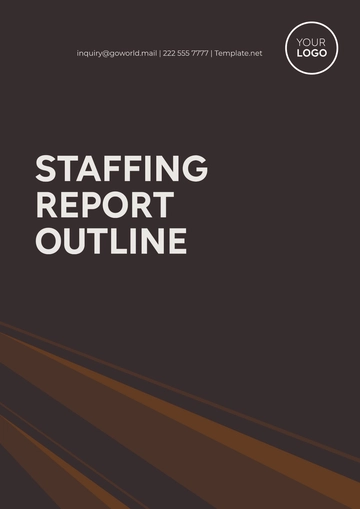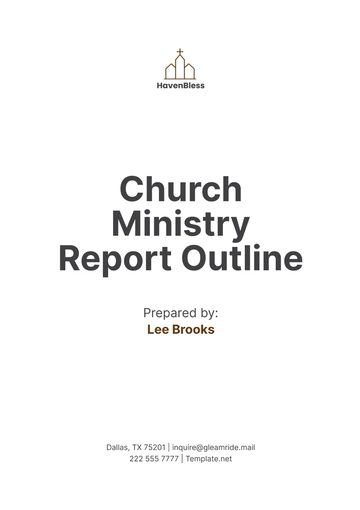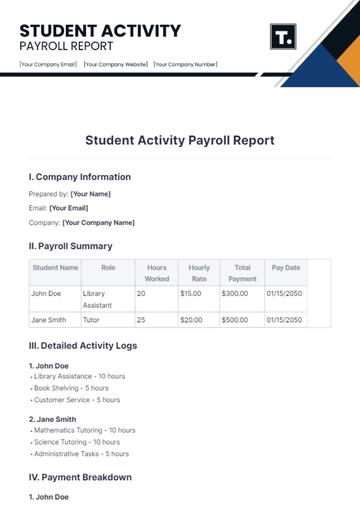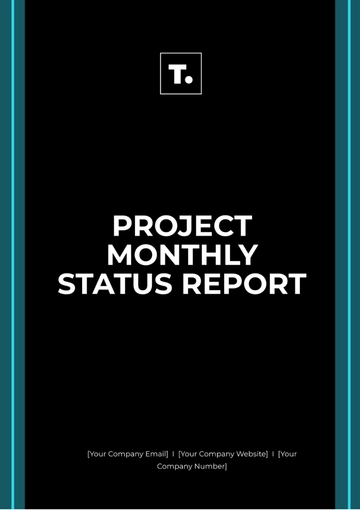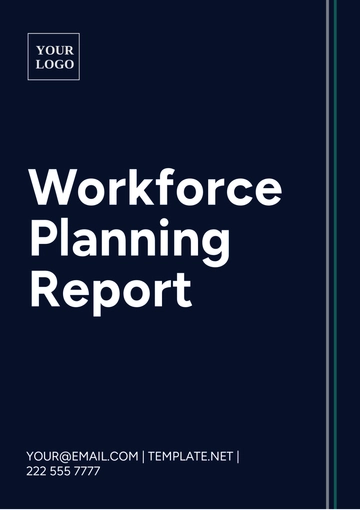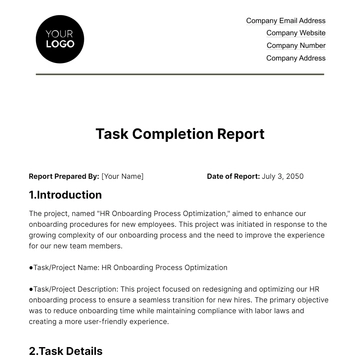Free Church Ministry Report Outline
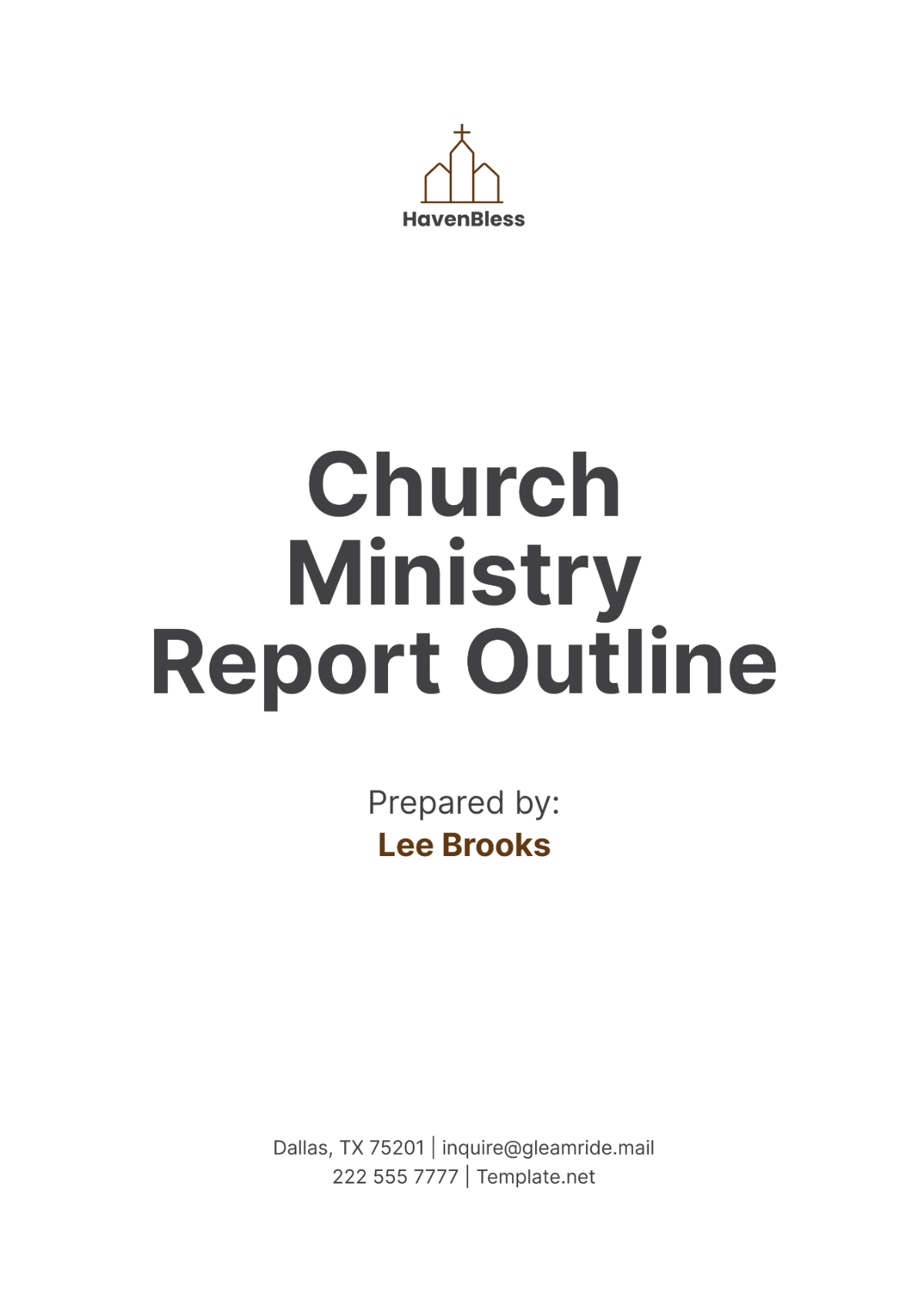
I. Executive Summary
(Provide a high-level overview of the report, summarizing key points and findings. Briefly describe the mission and vision of the ministry, the time period covered by the report, and highlight the main achievements.)
A. Mission and Vision Statement
(Include a brief reiteration of the church's core mission and vision statements. Emphasize how these objectives guide the ministry's activities and goals.)
B. Reporting Period
(Specify the timeframe that the report covers, such as a quarter, half-year, or full year. Mention the start and end dates.)
C. Key Achievements
(Highlight the significant accomplishments during the reporting period. Mention milestones reached, successful events, or notable improvements in ministry operations.)
II. Financial Overview
(Provide an overview of the ministry’s financial status. Include income, expenditures, and a statement of financial health. Emphasize how the financial resources were utilized to achieve ministry goals.)
A. Income Statement
(Detail the ministry’s sources of income, including donations, grants, and fundraising activities.)
Source | Amount |
|---|---|
[Donations] | [$15,000] |
B. Expenditure Statement
(Provide a breakdown of expenses, categorizing them into various activities or projects.)
Category | Amount |
|---|---|
[Operational Costs] | [$8,000] |
C. Financial Health
(Discuss the overall financial health of the ministry. Mention any surplus or deficit within the reporting period and provide explanations for significant financial changes.)
III. Ministry Programs
(Detail the various programs and activities driven by the ministry. Include youth, adult, and outreach programs, and discuss their impact on the community.)
A. Youth Programs
(Describe the activities focused on engaging the youth. Highlight key events, participation rates, and any notable achievements or challenges.)
B. Adult Programs
(Explain the programs aimed at adults. Include Bible study groups, workshops, and other forms of adult education and fellowship.)
C. Outreach Programs
(Discuss the outreach initiatives targeting the broader community. Mention service projects, community events, and partnerships with other organizations.)
IV. Attendance and Membership
(Provide data on church attendance and membership trends. Highlight efforts to grow and sustain membership, and address challenges faced.)
A. Attendance Statistics
(Present average weekly attendance figures. Show attendance by service or event.)
Service/Event | Average Attendance |
|---|---|
[Bible Study] | [200] |
B. Membership Growth
(Report on the increase or decrease in membership. Mention the efforts made to attract new members and retain existing ones.)
Month | New Members | Total Members |
|---|---|---|
[January] | [5] | [205] |
C. Membership Demographics
(Provide a breakdown of membership demographics, such as age groups, gender distribution, etc.)
Age Group | Number |
|---|---|
[18 - 35 years old] | [50] |
V. Volunteer Engagement
(Detail the status and achievements of the volunteer team. Include recruitment strategies, volunteer roles, and their contributions to the ministry.)
A. Recruitment Strategies
(Discuss the approaches used to recruit volunteers. Include outreach methods, promotional efforts, and incentive programs.)
B. Volunteer Roles
(Outline the various roles and responsibilities managed by volunteers. Highlight critical roles and the impact of volunteer work on ministry operations.)
C. Volunteer Contributions
(Describe the tangible and intangible benefits brought by volunteers. Use examples and anecdotes to illustrate their contributions.)
VI. Community Impact
(Assess the ministry's influence on the local community. Highlight the reach and effectiveness of community service projects and programs.)
A. Service Projects
(List service projects conducted during the reporting period. Provide details on the scope, participants, and outcomes of each project.)
B. Community Feedback
(Share feedback received from community members. Summarize common themes and insights gathered through surveys, testimonials, or informal conversations.)
C. Future Initiatives
(Outline planned future community service projects. Include objectives, expected impact, and any preliminary plans or collaborations.)
VII. Challenges and Solutions
(Identify key challenges faced during the reporting period and the solutions implemented to address them. Discuss any ongoing issues and future plans to mitigate them.)
A. Identified Challenges
(List the primary challenges encountered. Detail the nature of each challenge and its impact on ministry operations or objectives.)
B. Solutions Implemented
(Describe the measures taken to overcome the identified challenges. Highlight successful strategies and their outcomes.)
C. Ongoing Issues
(Mention any challenges that are still in progress. Explain the steps being taken to resolve these issues and any assistance needed.)
VIII. Future Goals and Plans
(Articulate the ministry's goals for the upcoming period. Include strategic initiatives, planned programs, and any changes to existing activities.)
A. Strategic Initiatives
(Highlight major initiatives planned for the future. Detail the purpose and expected outcomes of these strategic efforts.)
B. Program Expansion
(Discuss any plans to expand current programs or introduce new ones. Clarify the goals and resources required for these expansions.)
C. Resource Needs
(Identify the resources needed to achieve future goals. Mention financial, human, and material resources required and any fundraising plans.)
IX. Conclusion
(Summarize the overall progress and status of the ministry. Reflect on the accomplishments and challenges, and express gratitude to the team, volunteers, and supporters for their contributions.)
- 100% Customizable, free editor
- Access 1 Million+ Templates, photo’s & graphics
- Download or share as a template
- Click and replace photos, graphics, text, backgrounds
- Resize, crop, AI write & more
- Access advanced editor
Track and report ministry activities in a few easy edits with a professional outline, the Church Ministry Report Outline Template from Template.net! This editable template allows for comprehensive and customizable reporting. The advanced AI Editor Tool makes it easy to update and personalize the report to meet your church’s needs!
You may also like
- Sales Report
- Daily Report
- Project Report
- Business Report
- Weekly Report
- Incident Report
- Annual Report
- Report Layout
- Report Design
- Progress Report
- Marketing Report
- Company Report
- Monthly Report
- Audit Report
- Status Report
- School Report
- Reports Hr
- Management Report
- Project Status Report
- Handover Report
- Health And Safety Report
- Restaurant Report
- Construction Report
- Research Report
- Evaluation Report
- Investigation Report
- Employee Report
- Advertising Report
- Weekly Status Report
- Project Management Report
- Finance Report
- Service Report
- Technical Report
- Meeting Report
- Quarterly Report
- Inspection Report
- Medical Report
- Test Report
- Summary Report
- Inventory Report
- Valuation Report
- Operations Report
- Payroll Report
- Training Report
- Job Report
- Case Report
- Performance Report
- Board Report
- Internal Audit Report
- Student Report
- Monthly Management Report
- Small Business Report
- Accident Report
- Call Center Report
- Activity Report
- IT and Software Report
- Internship Report
- Visit Report
- Product Report
- Book Report
- Property Report
- Recruitment Report
- University Report
- Event Report
- SEO Report
- Conference Report
- Narrative Report
- Nursing Home Report
- Preschool Report
- Call Report
- Customer Report
- Employee Incident Report
- Accomplishment Report
- Social Media Report
- Work From Home Report
- Security Report
- Damage Report
- Quality Report
- Internal Report
- Nurse Report
- Real Estate Report
- Hotel Report
- Equipment Report
- Credit Report
- Field Report
- Non Profit Report
- Maintenance Report
- News Report
- Survey Report
- Executive Report
- Law Firm Report
- Advertising Agency Report
- Interior Design Report
- Travel Agency Report
- Stock Report
- Salon Report
- Bug Report
- Workplace Report
- Action Report
- Investor Report
- Cleaning Services Report
- Consulting Report
- Freelancer Report
- Site Visit Report
- Trip Report
- Classroom Observation Report
- Vehicle Report
- Final Report
- Software Report

